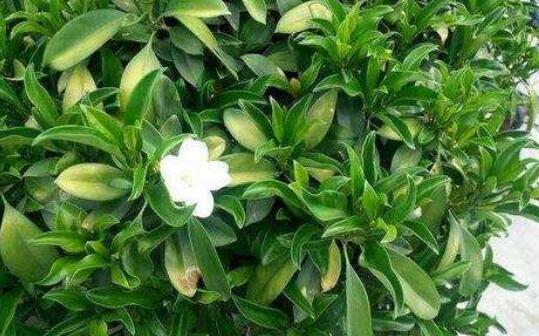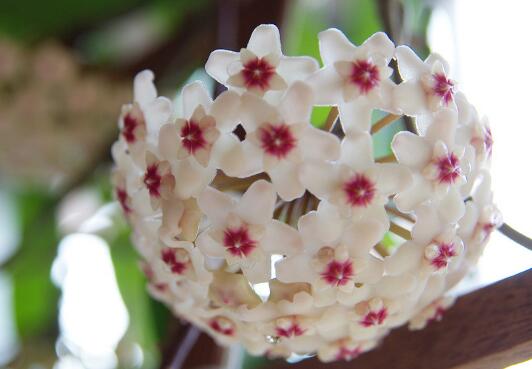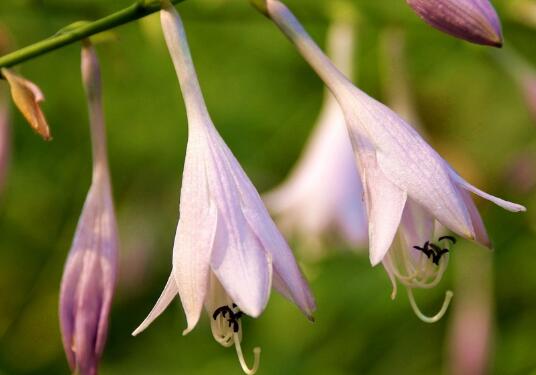How to propagate African jasmine? the propagation method / cutting survival rate of African jasmine is 80%.
African jasmine is one of the plants very suitable for indoor planting. Its leaves are beautiful, and the breeding method of African jasmine is simple and easy to learn, so many flower lovers plan to grow more pots at home, so how to reproduce African jasmine? Let's take a look at the breeding methods of African jasmine with the editor.
How does African jasmine reproduce

After years of research and the experience summed up by many flower friends, it is considered that there are four main propagation methods of African jasmine, namely, sowing, cutting, striping and ramet, because each method has its own characteristics. therefore, flower friends can choose the appropriate method according to their own conditions after reading the introduction below.
Propagation methods of African jasmine
I. cutting methods of African jasmine
1. Time selection
If it is cultivated in greenhouse, it can be cut throughout the year; if it is planted at home, the cutting time should be from April to October, but the best time is from June to July, when Rain Water is more abundant and the rooting speed is the fastest and most ideal.
2. Selection of matrix.
The substrate for cutting must be selected well, generally there are two common ways, one is cuttage hydroponic rooting, which refers to soaking cuttings in water, and the other is common soil culture, which is best made of peat soil, sandy soil, vermiculite or yellow soil.
3. Make cuttings
Making cuttings is a key part of cutting propagation. Take 1-2-year-old sturdy branches, cut off one of them, and then cut them into 12-15 cm each section, so that each cuttings have 2-3 leaves, and the rest of the leaves are cut off, so that the position of the incision is preferably 0.3 cm below the node.
4. Cuttage
Put the prepared cuttings in the prepared substrate, then cover it with plastic film for moisturizing, and then put it in a cool place for maintenance and management, so as not to let the sun shine directly on it.
5. Post-management
Pay attention to keep the temperature between 20-30 degrees, and pay attention to keep the soil moist, if dry should replenish water in time, do not need fertilization, generally in 1-2 months after rooting, the survival rate of this method is more than 80% according to statistics.
Second, African jasmine striping propagation
1. Ordinary pressing
⑴ time. The time is generally chosen in April.
⑵ method. Dig grooves in the basin soil, then select 2-3-year-old strong branches at the base of African jasmine, peel the middle and lower part of the branches in a ring, then press and bury the separated parts into the dug grooves and cover them with sand.
⑶ management. It usually takes root after 40-50 days, but it needs to wait until July-August to separate it from the mother plant, and then transplant it to other places. In the process of striping, you need to pay attention to appropriate shading.
2. High-altitude pressing strip
⑴ time. It is usually chosen in late April or early May.
⑵ method. Select a 2-year-old sturdy branch in the upper part of the plant and peel it 0.5 cm below the node, with a width of 3 times the diameter of the branch, wrap the peat in a plastic film and wrap it in the peeling place. and leave a water junction at the upper end of the soil mass for subsequent watering.
⑶ management. Pay attention to keep the soil mass moist, if it is dry, it should be watered properly from the water outlet, so that the soil mass can be slightly moist, not too much, and then wait 2-3 months to take root and separate from the mother plant in another 40 days.
3. Ramet propagation
1. Time. Ramet is the easiest method of propagation of African jasmine, and its time is usually from March to April.
2. Methods. Remove the whole plant of African jasmine from the flowerpot together with the soil, then shake off all the persistent soil, cut it with props from the weak base fertilizer of the root system, and divide the plant into several clumps, each with 2-3 roots and stems, and ensure that the roots are intact and undamaged, and then plant them separately.
3. Maintenance. Immediately after the ramet should be watered, watering should ensure thorough watering, pay attention to keep the soil moist, and let it maintain in the shade, this process does not need fertilization, generally about 3 weeks the plant will resume growth.
IV. Sowing and propagation
1. Time. As the ripening time of African jasmine fruit is in July, the time to collect seeds is usually 10-12 months. After collecting the ripe fruit, the seeds are removed and then stored in sand.
2. Methods. Soak the seeds in warm water for 5 minutes, spread them evenly on the sandy soil bed, cover the soil with a thickness of 2-3 cm, and add straw or plastic film to keep warm.
3. Maintenance. Pay attention to keep the soil moist, and then the seedlings will emerge in the spring of the second year. After emergence, the straw or plastic film should be removed in time, and then strengthen the management of fertilizer and water, pay attention to proper shading, so that the plant can grow smoothly.
How to reproduce African jasmine? how to reproduce African jasmine?
African jasmine, formerly known as ash or ash wood, is produced in southern China and Southeast Asia and other countries. In order to facilitate sales, the florist gave it a new name "African Jasmine". African jasmine is a common indoor foliage plant. Its leaf blade is slightly fleshy, elliptic, ovate, Obovate or oblong, sometimes oblong-lanceolate. As we all know, indoor plants pay great attention to their planting techniques and propagation methods. African jasmine as a kind of indoor plant, its reproduction method also has its own exquisite, so how to reproduce African jasmine? Next, let's learn how to reproduce African jasmine.
How to reproduce African jasmine? how to reproduce African jasmine?
Sowing: it is suitable to collect ripe fruit from October to December, remove the seeds, sow or row the African jasmine seeds on the loose and fertile sandy soil seedling bed, cover the soil with a thickness of 2 to 3 cm, and cover with straw or plastic film to keep warm against cold, or store the seeds in the seeds to show white before sowing. The seeds sown in late autumn and early winter will not emerge until the next spring. After emergence, the covered grass will be removed in time to strengthen the management of water and fertilizer. After summer, a shed will be built to cover the shade, and it is expected to cultivate a tall African jasmine with better stem shape.
Cutting: African jasmine cutting can be carried out from the end of April to October, but it is best to be cut in the Meiyu period from June to July, and the rooting effect is ideal. Cut 1-2-year-old strong branches as cuttings, ear length 12-15 cm, with 2-3 half leaves, the lower incision is best located at 0.2-0.3 cm below the node, cut it in peat soil, sandy soil, vermiculite or yellow soil, but the rooting effect of peat soil is the best, mask plastic film moisturizing, pay attention to shed shade in sunny weather, African jasmine can take root after 1 to 2 months, and the survival rate can reach more than 80%.
Ramet: between March and April, when African jasmine begins to germinate, remove the tufted plants from the flowerpot, or dig up the tufted plants from the soil, shake off part of the persistent soil, and cut them with a sharp knife where the root system is weak. so that each clump with at least 2 to 3 stems, with a part of the intact root system, respectively, or potted. In addition, African jasmine sprouts a lot of tillers on the roots near the ground, which can be truncated from the roots and then planted separately, which is also very simple and convenient.
Crimping:
① low pressure, in the southern region, in April, the middle and lower parts of 2-to 3-year-old strong branches sprouting at the base of African jasmine were annularly peeled or scratched, and then forcibly pressed and buried in the excavated trenches on the ground, covered with thick soil, and rooting after about 40 to 50 days. From July to August, it is cut off from the mother plant and planted separately or potted. This method is widely used in the production of African jasmine.
② high pressure, after the potted African jasmine in the north came out of the house at the end of April, the 2-year-old African jasmine was peeled in a ring at 0.5cm below the node of the 2-year-old strong branch, and the width of the peat was about 3 times the thickness of the branch, and then covered with wet peat or peat in the ring peeling place, and there was a water outlet at the top of the soil mass to keep the soil mass moist. African jasmine can take root after 2 to 3 months. African jasmine lovers can use this method to breed a small number of flower friends.
African jasmine how to reproduce, African jasmine breeding methods are introduced here. To sum up, African jasmine likes warmth, good sunshine, high air humidity and good ventilation. African jasmine grows fast and of high quality in a loose, fertile, well-drained loam. At the same time, the florescence of African jasmine is from April to August, so we should seize the opportunity to sow, cuttage, ramet, striping.
How to cuttage propagation of African jasmine
Cutting time
African jasmine can grow seedlings by cutting from April to October, but cutting in Meiyu season has the best rooting effect.
Cuttage container and substrate
Generally speaking, the substrates needed for cutting African jasmine should be aseptic, breathable, permeable, fertilizer-free, non-spoilage and capable of supporting cuttings. Such as yellow sand, perlite, vermiculite and so on. Loose soil, sawdust and plant ash can also be used for cutting. At the same time, the cuttings can also be soaked in water, that is, water cuttings.
Cutting method
Cut 1-2-year-old, disease-free and insect-free branches as cuttings, the cuttings should not be too old, the length of the ear is about 12-15 cm, with 2-3 and a half leaves, each leaf needs to be cut off, and the position of the lower incision should be 0.2-0.3 cm below the node. Cut it in sandy soil, peat soil, vermiculite or yellow soil, in which the rooting effect of peat soil is the best, cover plastic film moisturizing, sunny weather pay attention to shade It can take root after 2 months, and the survival rate can reach more than 80%.
- Prev

The method of cuttage propagation of orchid is cutting / selecting stout branches in late summer and early autumn.
Among the propagation methods of orchids, cutting propagation is a more commonly used method, and the survival rate is also relatively high, but the premise is that you master the correct operation method, so what is the specific method of cutting propagation of orchids? Next, the editor will take you to learn about it.
- Next

How to propagate Jade hairpin flower, the method of propagation / sowing propagation / cutting propagation
Hairpin flower is a kind of highly ornamental flower plant, which is cultured in many areas of our country, but with more people breeding, people are more concerned about its reproduction, so how to reproduce it? What are the breeding methods of hairpin flowers? Next, the editor will take you to learn about it.
Related
- Fuxing push coffee new agricultural production and marketing class: lack of small-scale processing plants
- Jujube rice field leisure farm deep ploughing Yilan for five years to create a space for organic food and play
- Nongyu Farm-A trial of organic papaya for brave women with advanced technology
- Four points for attention in the prevention and control of diseases and insect pests of edible fungi
- How to add nutrient solution to Edible Fungi
- Is there any good way to control edible fungus mites?
- Open Inoculation Technology of Edible Fungi
- Is there any clever way to use fertilizer for edible fungus in winter?
- What agents are used to kill the pathogens of edible fungi in the mushroom shed?
- Rapid drying of Edible Fungi

